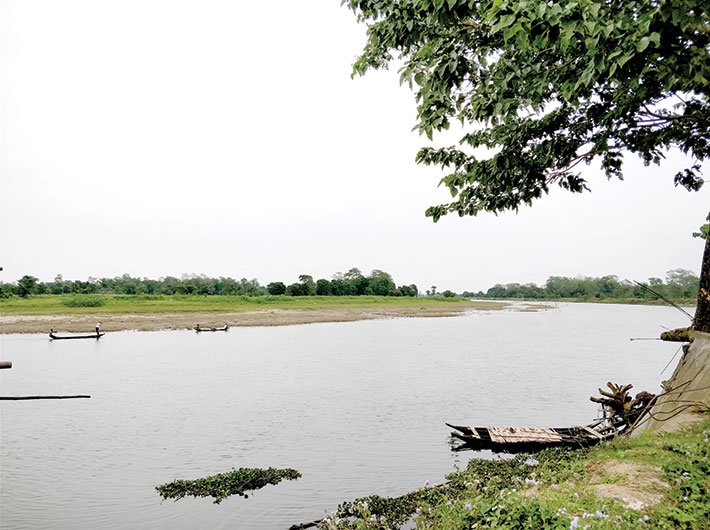Tourism can help generate new livelihood opportunities. Here is a case study of Majuli
Tourism, one of the largest industries in the world, employs approximately 8 percent of the global population. Over the years, it has proved to be a viable socio-economic development strategy for developing countries. Most countries use tourism as a tool for development, because of its contribution to foreign exchange earnings, government revenue, regional development stimuli, and creation of income and employment [see Moses Njole’s 2011 thesis from the Wageningen University and Research Center, ‘Tourism for sustainable local livelihood and nature conservation’]. Multiple forms of tourism including rural, pro-poor, and cultural/heritage tourism are designed to cater to local communities since it directly involves them as active stakeholders (and beneficiaries) in the process.
Let us look at the case of Majuli, a river island in Assam, to illustrate how tourism has the potential to be a relevant alternative source of livelihood. This island is chosen due to the contribution of tourism towards creation of employment opportunities and adding economic value to the region.
About Majuli
Majuli, which means ‘the land between parallel rivers’, is located between the Brahmaputra in the south and Subansiri river in the north. It is the first island to be declared as a district in India. Majuli, blessed with natural beauty, is also a spiritual epicentre in Assam. Multiple small lakes, also known as ‘beels’, attract a host of migratory birds, making the island a preferred destination for bird watchers.
Population of Majuli is a mix of Assamese tribal groups like the Mishing, Deoris, Sonowals. The main form of livelihood for them is fishing and rice cultivation. Majuli also hosts Satras, which are the nerve centers of the Neo-Vaishnavite movement started by the Assamese polymath, Shrimanta Shankardev in the 15th century. Apart from the Satras, Majuli is also home to the living tradition of mask making. The art is inherited by generations and continues to depict centuries-old heritage. The river island also boasts of traditional handloom industry managed by local women from different villages. These handlooms showcase the diversity of the different tribes present on the island.
Issues in Majuli
According to Guinness Book of World Records, in 2016 Majuli was recognised as the largest river island in the world. In 1950, Majuli had a total area of 1,246 sq km whereas in 2011 it was 582 sq km. In 2018, the total area of Majuli is approximately 350 sq km. This reduction is due to massive erosion that has claimed a lot of land, which is mostly agricultural, thus leaving the local people without livelihood resources. Local communities are working towards making Majuli resilient to erosion by constructing embankments in areas like Dekasang, which loses chunks of land on account of incessant rainfall on an annual basis. Similarly, as accounted by the locals, since the 1990s, availability of fish has also drastically reduced. There is a government ban on fishing a few breeds of native fish, which has further limited livelihood scope for the locals. Most of the tribal communities like the Mishings are socio-economically fragile and depend on livestock or poultry for their subsistence. However, with recurring floods each year, it has become difficult for them to maintain the livestock. Another issue is the rapid rise in the population. From 1950 to 2011, the population of Majuli has increased from 81,001 to 167,304 and at the same time the island’s land area has reduced dramatically. This is not helping with the already existing problem of creating new livelihood opportunities.
Tourism as a tool for development
Majuli is already a popular destination for rural tourism, heritage tourism, and spiritual tourism. Moreover, in the last few years, the island has seen an influx of international tourists. The local community has begun to leverage tourism opportunities by creating infrastructure from locally available natural materials to ensure the ecology does not suffer at the cost of burgeoning tourism. For example, Mepu-O-Kum, a resort situated in Mishing village of Sitadar is constructed using local bamboo as the primary input material. Such resorts have allowed diversification of sources of income for local community members, thus reducing their dependency on seasonal occupations like rice or poultry farming. A few families have also ventured in the business of home stays where tourists experience local food and culture. Local fishermen have also changed their vocation to ferrying tourists which has translated into relatively higher consistent income compared to fishing. There has been a significant increase in the number of local guides who are well endowed with the traditional knowledge of the native tribes as well as the local history. Women from local tribal communities create indigenous handloom products, which are often sold to tourists. This has helped them attain financial independence.
Tourism has emerged as an alternative form of livelihood for the local communities which have reduced their dependence on conventional vocations like agriculture, fishing and poultry farms.
Way forward?
Tourism indeed has the potential to fulfill the existing gap of livelihood generation in Majuli. However, seasonality impedes tourism from being a revenue provider around the year. While local communities are able to sustain on revenue from tourism during the peak season, i.e., October to March, the remaining part of the year is relatively harsh. This is because of the rise in the water level of the rivers and recurrent floods. There is a need for the local government to take a more active role in helping the local communities through infrastructural development and capacity building. The focus should also be on developing a strategy to take care of the local communities in the off-season period.
Hazarika is senior research associate, Pahle India Foundation.
